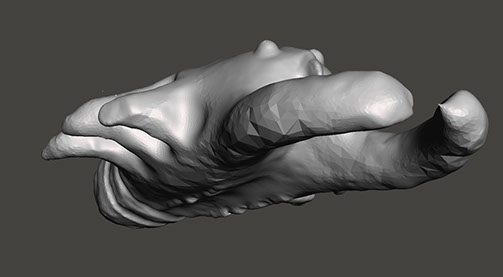Species: Pleuroncodes planipes
Student: Natalie Dixon
Information:
The Pleuroncodes planipes is a type of crustacean that is classified within the decapod family, which includes lobsters, crabs, and shrimp creatures. The pleuroncodes planipes is referenced as a type of squat lobster. Its orange and red coloring coined it the nickname “the red crab,” and although it is not considered a true crab, it does act in a similar fashion. Red crabs are plankton during the larvae stage, as they grow, begin to migrate as adults. As omnivorous creatures, their diet consists of both plants and animals – primarily feeding on small fish, copepods, and other phytoplankton and zooplankton. Much of its food is collected with small micro hairs on its legs and abdomen. The species is primarily found off the cost of Central and Southern California, often traveling in groups and swarms.
Plankton, some single-celled and some multi-celled, are differentiated into two main groups: phytoplankton and zooplankton. The only difference between the two is the way in which they create energy. On one hand, phytoplankton use the process of photosynthesis while, on the other, zooplankton use and eat other organisms. Pleuroncodes planipes are classified as zooplankton because they eat other organisms to sustain themselves. As plankton are at the base of the aquatic food chain, their primary productivity plays an important role in creating energy that helps sustain the surrounding aquatic ecosystem. The vast influence and impact they have is disproportionate to their small physical size. As recent history has seen the first-hand effects of the degradation of many ecosystems, it is important for us to recognize the beauty and vital necessity of these little sea creatures. By supporting and protecting their livelihood, every aquatic ecosystem on the planet is directly benefitted.
